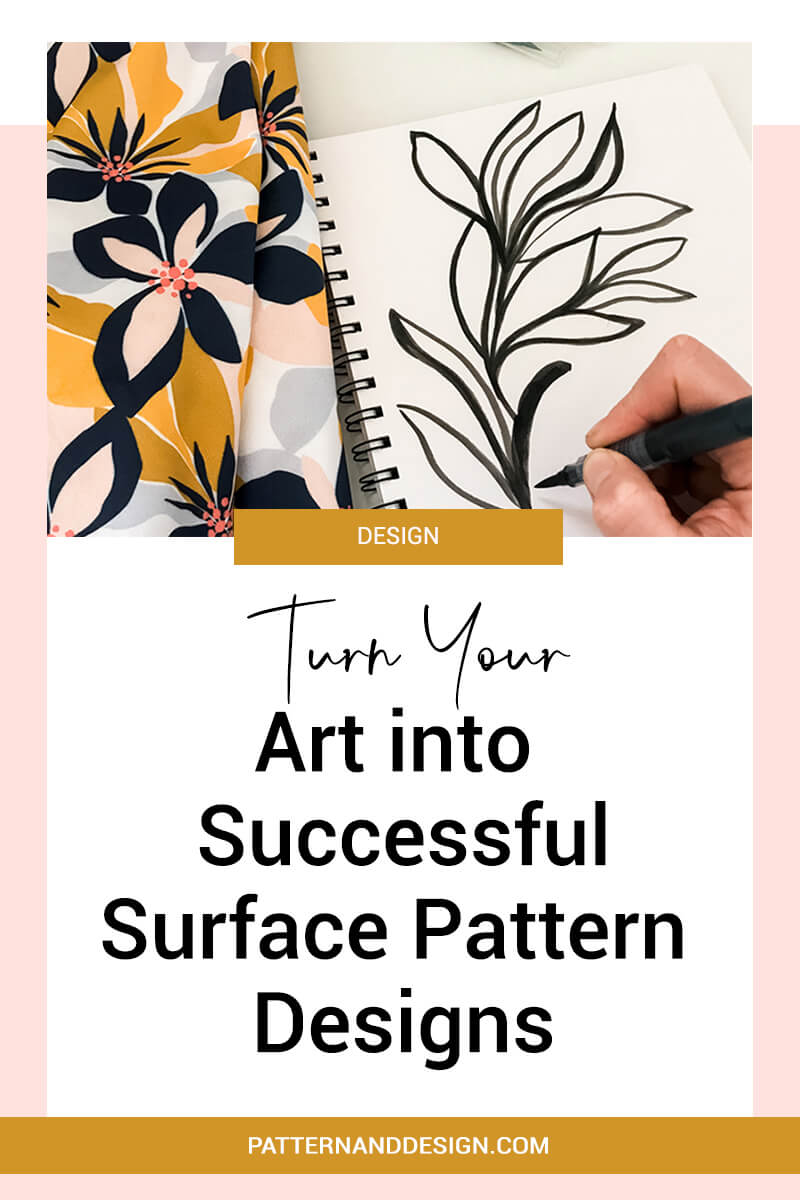learn about all things surface pattern design including the creative design process, being a successful creative entrepreneur & stepping into the mindset of a successful designer
welcome to the pattern design blog
blog
The
Categories
Popular
Turn Your Art into Pattern Repeats
Would you like to learn how to turn your art into pattern repeats? There are a few things to think about when you’re creating your art which will help you more easily create pattern repeats successfully.
Creating pattern repeats from finished artwork
The first thing we are going to look at is creating pattern repeats from finished artwork. This is something that you can definitely do and will involve scanning your artwork into the computer and then putting it into repeat. The problem though with doing this though as all four edges of your artwork need to match up when repeated, it will involve lots of fiddling around in order for it to work successfully. You will need to blend, add and adjust your artwork and is your artwork is one complete piece, it will take some time and skill to be able to do it and would best be done using Photoshop. If you’re new to using Photoshop then I wouldn’t recommend creating your artwork in this way to create your pattern repeats.
Tips for creating your artwork
If you are creating hand-rendered designs and artwork that you want to be able to repeat in your computer, you need to consider how you are going to create your elements before you begin. You can use whatever medium you like e.g. acrylic, watercolour, gouache, etc. but what I would advise you doing is actually create them intentionally to use as pattern designs rather than just taking your completed artwork and bringing it into the computer to create your pattern repeats as this will make it far easier for you, especially if you’re just starting out learning how to use the programs.
The first thing that will make it easier is if you create your artwork on a white background as this will make it far quicker and easier to remove.
The second thing you want to think about is creating the elements of your design so that they’re not touching ie. they’re all separate from one another. This will allow you to have greater flexibility for how you use them once you bring them into the computer. In other words, you want to create each of your design elements as separate islands. For example, if you’re using leaves within your design, if you create the leaves so that they’re not touching once you’ve removed the background of the leaves then you can move them and repeat them in whichever way you like.
Using your beautiful hand created design elements is a wonderful way of creating your pattern repeats and you will be able to create some really gorgeous patterns but just think about how you create your design elements to make it easy for yourself when you go to repeat them. Remember, you can create a pattern repeat from a finished artwork but it’s going to be trickier and take more time and skill as opposed to creating your design elements separately.
Scanning your designs
One other thing you do really want to consider when you’re creating your design elements by hand is considering the scale at which you’re creating them. I recommend creating your design elements at the size or larger than you intend to use them or if you need to use your design elements at a larger scale, you’ll need to scan them in at a higher DPI setting. Generally, if scan your designs in at 300 DPI and you’re creating your design elements at the scale or larger than you intend to use them then you should be fine.. If you do need to enlarge your elements too much within Photoshop you’ll end up with those elements becoming pixelated.
Before you begin, if you consider how you create your hand-rendered artwork you’ll make it easier, quicker and give yourself greater flexibility when you start creating your pattern repeats.

Want to create another revenue stream by turning your art into surface pattern designs?
Get the free guide
Get my FREE Surface Pattern Design Starter Guide